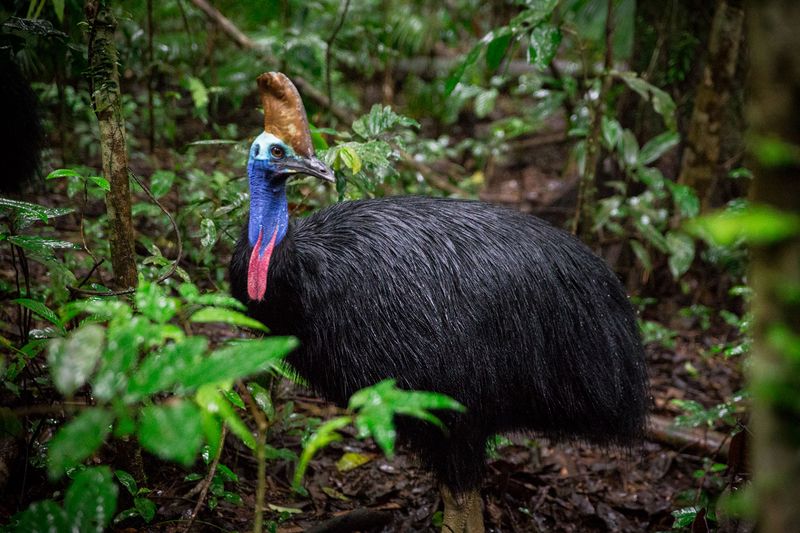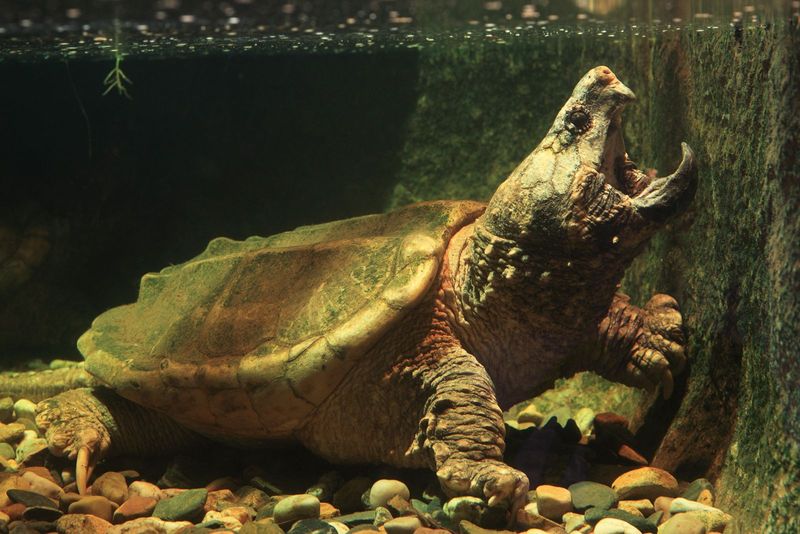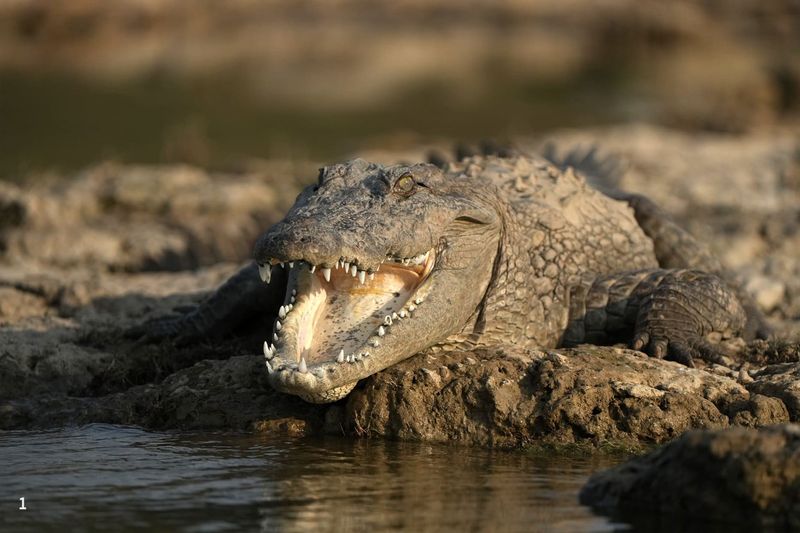Dinosaurs never really left. Some just got feathers. While the colossal giants of prehistory are long gone, their legacy still stalks the Earth in surprising forms. From birds with ancient bones to reptiles that haven’t changed in millions of years, echoes of the Mesozoic still creep, crawl, and soar around us. You might spot one sunbathing on a rock. Or hear another singing from the treetops. They’re not movie monsters—but their roots stretch back to a time when T. rex ruled and the skies buzzed with flying predators. So, if you thought dinosaurs were just fossilized relics in a museum—think again. Some of their distant cousins are alive and well… and maybe a little closer than you think.
Komodo Dragon

With tough scales and a forked tongue, the Komodo dragon is a modern giant. This formidable creature, native to Indonesia, stands as the largest living lizard, reaching lengths of up to 10 feet. Known for its powerful build and keen hunting abilities, it draws parallels to legendary predators of the past.
Interestingly, Komodo dragons possess a unique venomous bite, a trait shared by few creatures today. Their presence on the isolated islands ensures minimal competition, allowing them to reign supreme. This evolutionary marvel illustrates nature’s ability to adapt and thrive through time, connecting us to a bygone era.
Crocodile

Crocodiles, with their armored skin and stealthy demeanor, are nature’s ancient survivors. These formidable reptiles, often found in rivers and swamps, can trace their lineage back over 200 million years.
Their patient, ambush-style hunting strategy is reminiscent of their ancient ancestors. Despite their prehistoric roots, crocodiles have evolved with precision. Their powerful jaws and keen senses make them apex predators in their environment.
A fascinating fact: crocodiles have a four-chambered heart, similar to birds and mammals. This complex cardiovascular system highlights their ability to adapt and endure through centuries.
Cassowary

The cassowary, often dubbed the “world’s most dangerous bird,” is a striking sight. Native to the rainforests of Australia and New Guinea, its vivid blue neck and helmet-like casque make it unforgettable.
Despite its beauty, the cassowary is known for its territorial nature and powerful legs, capable of inflicting serious harm. This modern descendant of dinosaurs stands as a reminder of the bird-reptile connection.
Did you know? Cassowaries play a crucial role in their habitat by dispersing seeds, supporting the growth of diverse plant species. Their presence is vital to the ecosystem’s health.
Alligator Snapping Turtle

With a prehistoric appearance, the alligator snapping turtle is a true relic. Found in the waters of the southeastern United States, its spiked shell and beak-like jaws give it a formidable look.
This patient predator uses a unique lure to catch fish, mimicking a worm with its tongue. Despite its fearsome appearance, it plays a crucial role in aquatic ecosystems by controlling fish populations.
Its ancient design, unchanged for millions of years, offers a glimpse into the past. The turtle’s resilience exemplifies nature’s capacity for persistence through time and change.
Tuataras

Tuataras, native to New Zealand, are more than just lizards; they are a window to the past. These unique reptiles are the only surviving members of an ancient group that thrived during the age of dinosaurs.
Their slow growth and unique third “parietal” eye, believed to detect light changes, differentiate them from modern reptiles. Although tuataras face threats from habitat loss, conservation efforts aim to secure their future.
Their presence in isolated environments highlights evolution’s unpredictability, where ancient traits can coexist with modern adaptations, offering a living connection to prehistoric times.
Hoatzin

The hoatzin, a peculiar bird of the Amazon rainforest, defies conventional avian characteristics. Known for its digestive system that ferments leaves, this bird is sometimes called the “stinkbird.”
Its chicks possess clawed wings, reminiscent of ancient bird ancestors, adding to its prehistoric allure. The hoatzin’s social behavior, often seen in large flocks, contrasts with its bizarre physiological traits.
This unique combination of features and behaviors underscores evolution’s diverse pathways. The hoatzin remains a subject of intrigue, providing insights into avian evolution and ancient connections.
Gharial

Gharials, with their elongated snouts, are distinctive among crocodilians. Found in the rivers of the Indian subcontinent, they specialize in catching fish, their long jaws perfectly adapted for the task.
Once widespread, gharials are now critically endangered, with conservation efforts underway to protect them. Their unique appearance and behavior set them apart from their relatives.
An interesting trait: gharial males develop a bulbous growth on their snout, called a “ghara,” used to produce sounds during mating rituals. This feature highlights the gharial’s unique evolutionary path and adaptation.

